In the world of trucking, the size of the load a single truck can carry is vitally important. If a trucker can carry more goods in a single load, they might be able to rake in more money. Likewise, if you’re a company moving material around, it’s appealing to be able to move more material on a single trip. Trucks can be only so long, so if you want to carry a ridiculous load, your truck might have to get absurd. This was the case with the Schnibbel-Mobil, also known as the so-called Cologne Crocodile. This weird German truck had just one mission: to carry as much metal as possible, and the company that built it did so by taking a truck and grafting a Ford station wagon onto its front end.
The Schnibbel-Mobil is perhaps the weirdest version of a truck built to solve this specific problem, but it’s far from the only one. In recent times, I have written about the Strick Cab-Under and the Steinwinter Supercargo, two trucks that followed the same concept. These types of trucks are known as “cab-under” trucks, and they’re designed to sit under their cargo, and sometimes, the driver even sits lower than the engine.
Legally, the total length of a tractor-trailer can only be so long, and the semi-truck itself takes up valuable feet of space. Historically, cabover semi trucks – where the cab sits over the engine and front axle – used to dominate the roads in America because they took up less real estate than conventional semis. In the 1980s, America loosened its grip on tractor-trailer total lengths, allowing the conventional semi – where the engine and front axle are ahead of the cab – to overtake the cabover to become the default American truck.
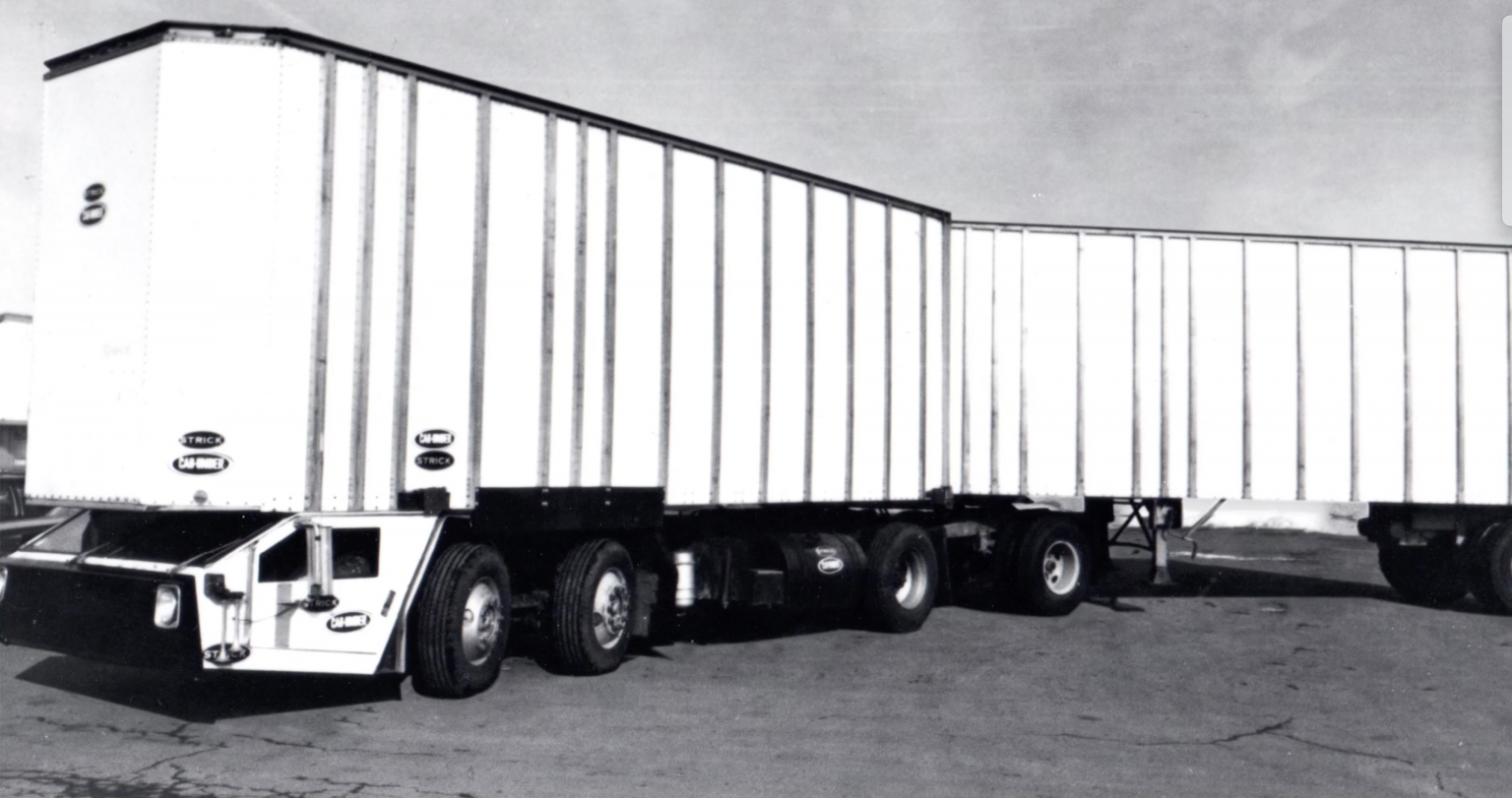
Cabover semis remain dominant in Europe for several reasons. The European cabover is a star of maneuverability and visibility, and also permits drivers to haul maximum loads within Europe’s length restrictions. A standard tractor-trailer in Europe is allowed to be 16.50 meters, or 54 feet long. Long Heavy Vehicles are allowed 18.75 meters, or 61.5 feet. Then, there are special rules for specific nations. In Germany, the Netherlands, and Sweden, some trucks can get as long as 25.25 meters, or about 83 feet!
Of course, then there are special trucks that are even longer, like those that carry wind turbine blades. This is where the Schnibbel-Mobil comes in. This rig was built to carry aluminum sheeting measuring 170 feet in length, and the amazing part is that this bizarre concoction was actually highway legal!
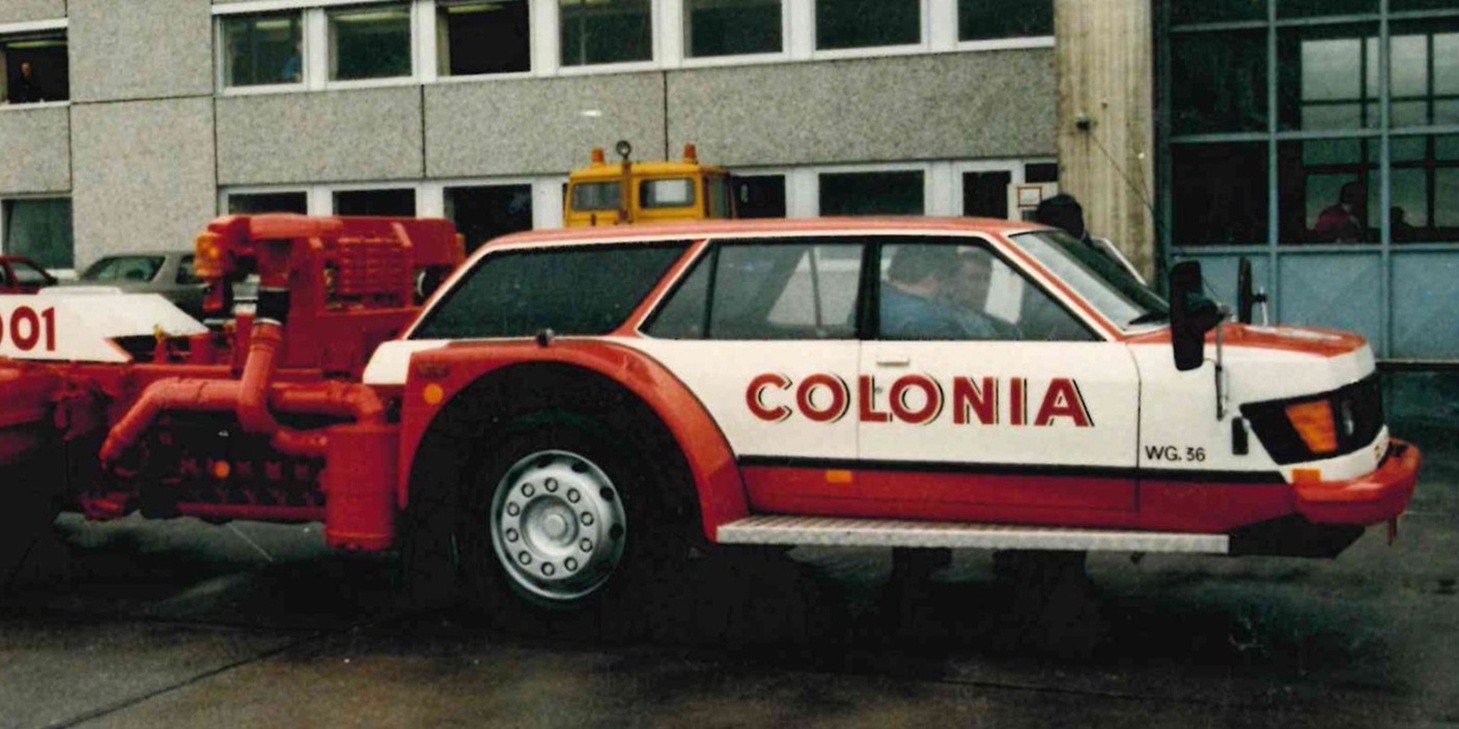
Built For One Job
I have cracked open as many pages of the Internet as I could find. I even changed my region to Germany. Yet, I was able to find only two solid sources for the story of the Schnibbel-Mobil. One was its creator, Cologne-based Colonia GmbH, and the other was German historic vehicle magazine Historischer Kraftverkehr.
Colonia was founded in 1945, and the company specializes in the construction of special work trucks. Here’s what the company says about its history:
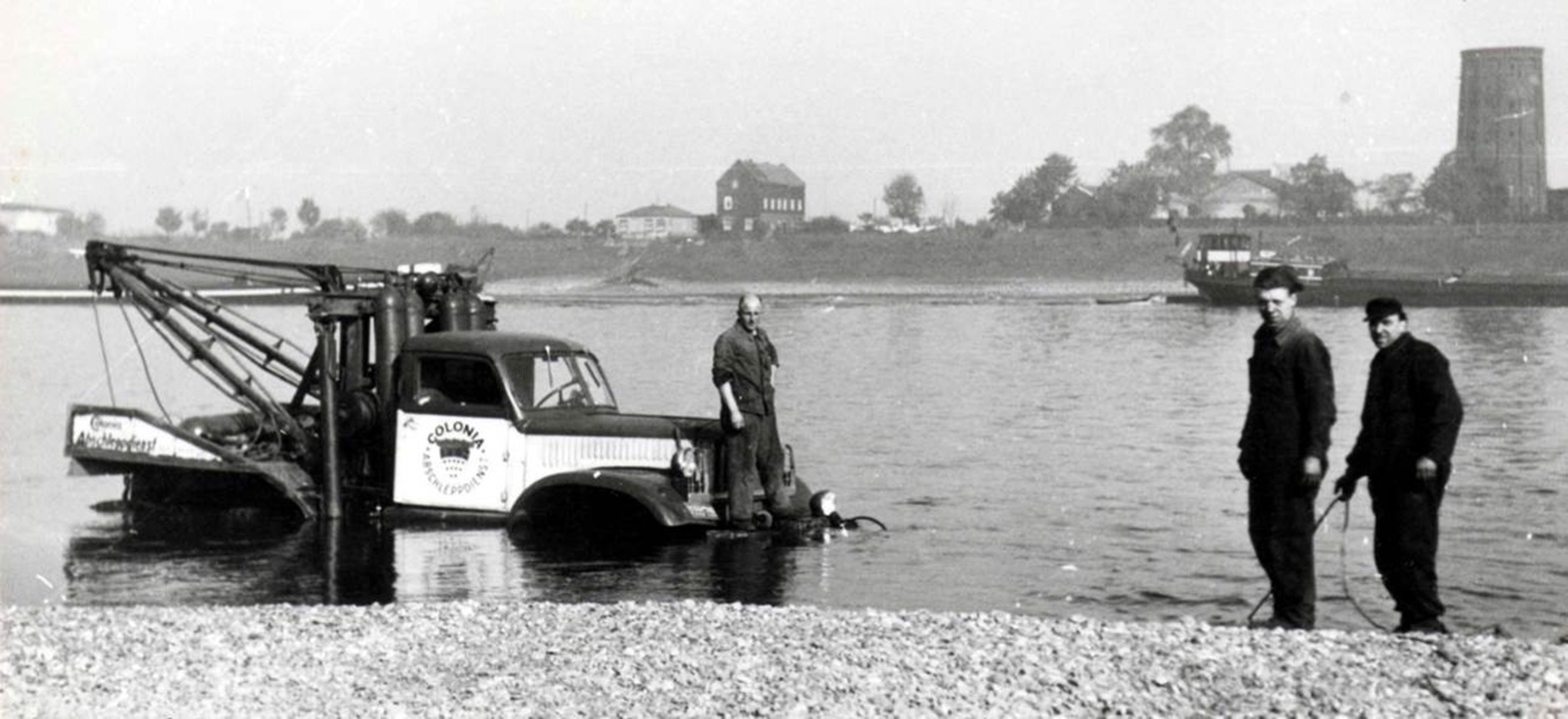
Gottfried Schönges combined a decommissioned Opel Blitz and iron from a sunken ship to create the very first COLONIA special vehicle. In the postwar days, ingenuity was required, and above all, cleanup! The good old Opel Blitz soon couldn’t keep up. An American Diamond, complete with a crane hook, was deployed. This now cleared the Rhine of bridge debris and sunken ships.
1960
Business is booming, demand is high, and entrepreneurial spirit is unwavering. COLONIA Towing Service becomes COLONIA Special Vehicles. The first low-loader is added to the fleet, followed shortly thereafter by an 18-ton loading crane and a 35-ton mobile crane. The country needs new vehicles! Thus, COLONIA specializes in the industrial sector and is ahead of its time.
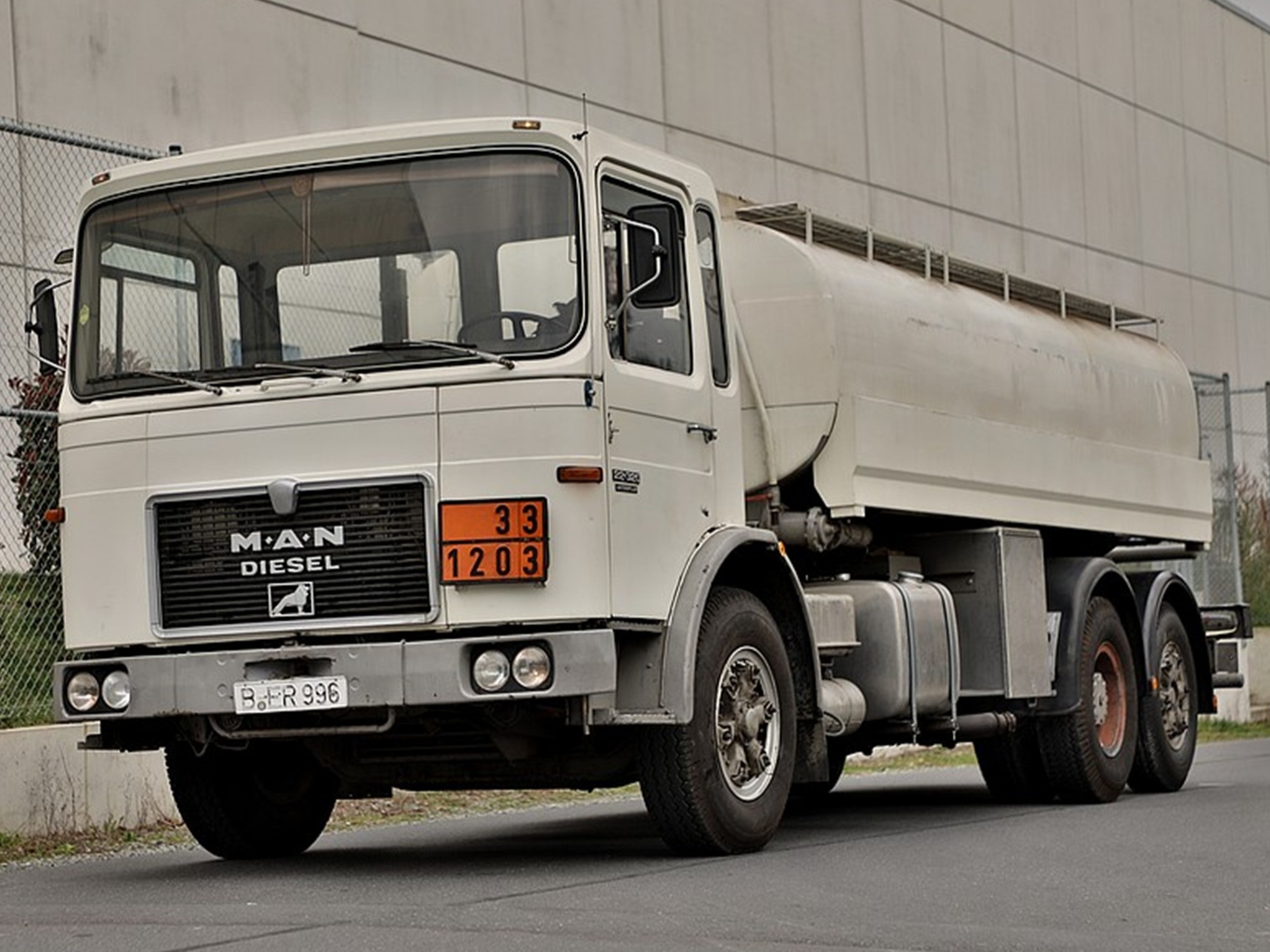
As Historischer Kraftverkehr writes, it was in the 1980s when Dutch firms VAW Aluminum and Hoogovens reached out to Colonia with a desire for a truck capable of hauling 52 meters (170 feet) of aluminum trapezoidal sheets. Colonia’s solution was surprisingly low-tech, yet clever. The firm started with a MAN-Büssing F8 22.320 UNL, a popular cabover vocational truck and semi that had been in production since at least the 1970s. The 22.320 was known for its 12-liter Büssing U12DA six-cylinder underfloor-mounted 320 HP engine.
In order to be able to carry such a long load, Colonia decided to remove the truck’s cab and place a low-slung body in its place. As it happened, Colonia had a Ford Granada Turnier wagon on hand that had been wrecked by an employee. In case you’re curious, and I know you are, the European Granada is not the same as the American one.
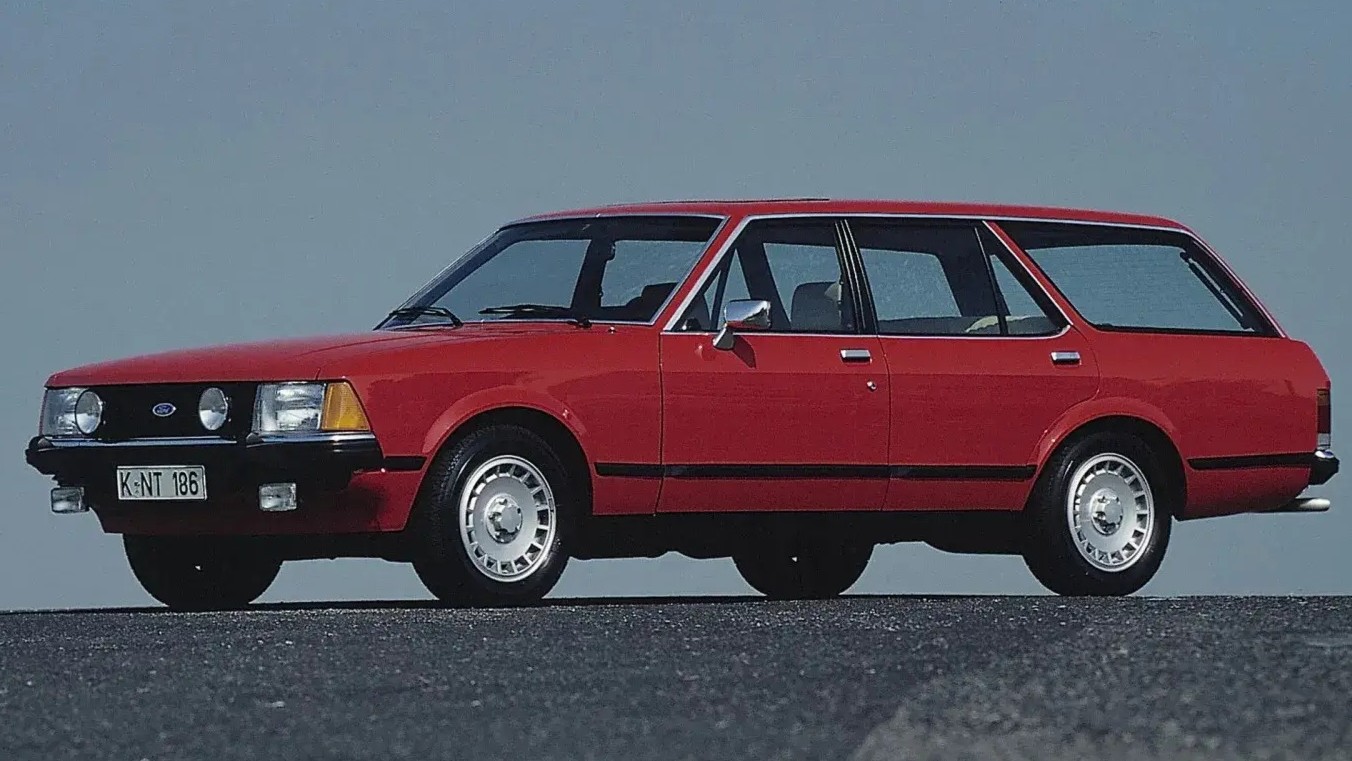
Anyway, Colonia crafted a custom subframe, mounted it to the MAN, and then parked the wagon on the new front end of the truck. Colonia’s fix for the wagon’s crash damage was equally silly, as the company just took the face of a Mercedes TN 207 D van and grafted it over the destroyed mug of the wagon. Getting power to the road was an eight-speed Fuller transmission.
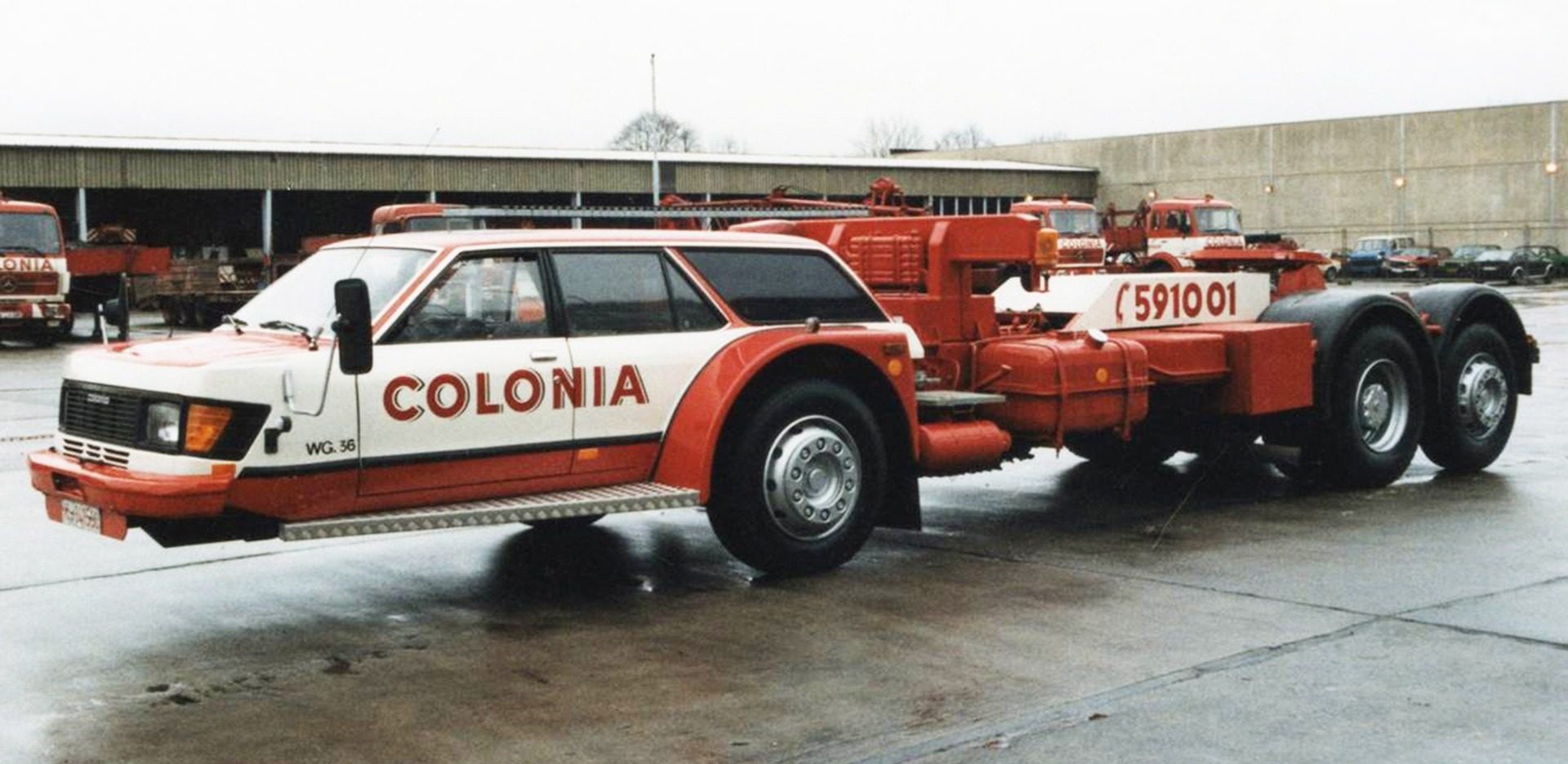
The wagon portion of the build was amazing because it was largely unchanged. The Ford retained its regular steering wheel – which is notable because car steering wheels are usually much smaller than truck wheels – and interior. The biggest clue that this was no normal Ford was the fact that the speedometer, which was nabbed from the MAN, stopped at 100 km/h, or about 62 mph. The truck-wagon even had a sleeper, sort of. The back of the wagon had its seats removed and replaced with a flat floor, so that the driver could get some sleep time.
Colonia capped off the build with a custom triple-axle Welte trailer and a giant steel span from the rear axles to the wagon-truck rig. When completed, the truck made its journey from Germany to the Netherlands, where, surprisingly, it passed the Algemene Periodieke Keuring (think the Dutch version of the German TÜV inspection) and was cleared to drive down highways. The timing is somewhat unclear here, as Colonia says it built the truck in 1988.
The Cologne Crocodile Hits The Road
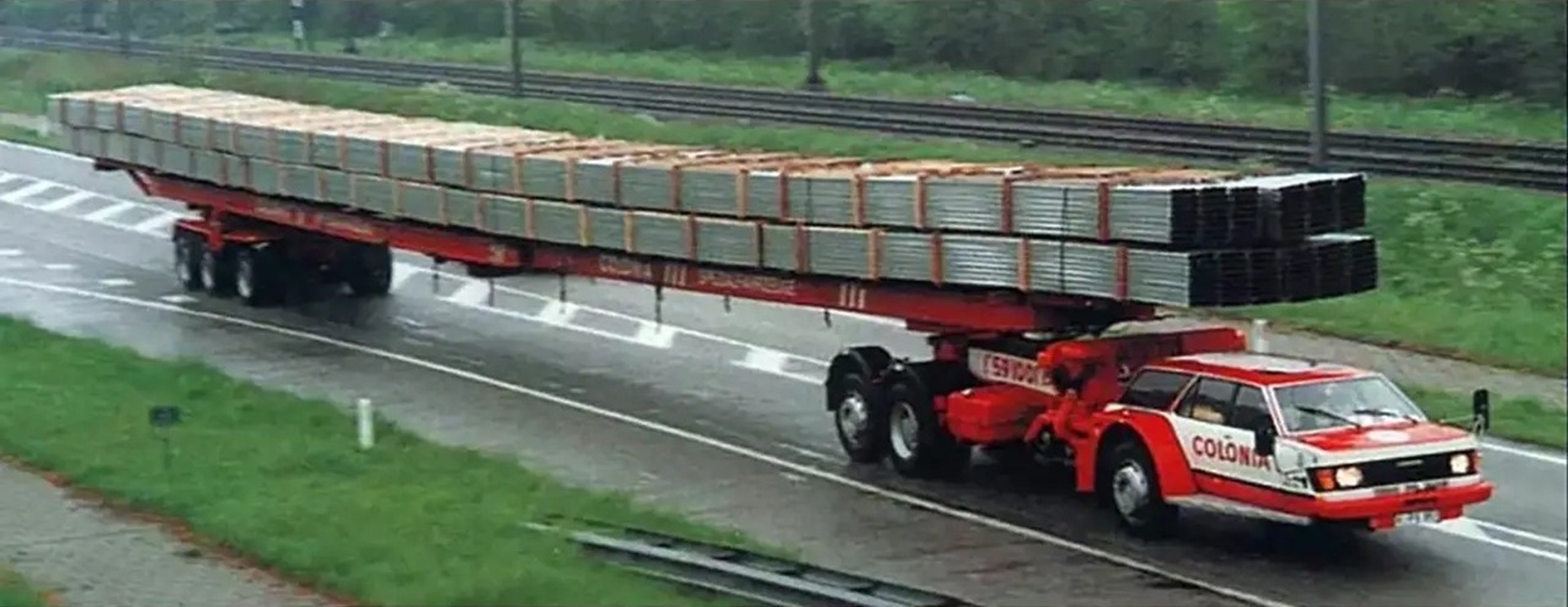
Once in the hands of its new owners, the Schnibbel-Mobil, or the so-called “Cologne Crocodile,” would make regular runs between Koblenz in Germany and the Netherlands, a drive that, depending on the exact destination, could take around four hours and cover around 200 miles or so. However, Hoogovens drove the truck all over Germany and the Netherlands. By the late 1990s, the truck managed to rack up 800,000 kilometers, or about 497,000 miles of driving. By this time, the old Büssing diesel was worn out and was replaced with a 414-horsepower diesel. Sadly, it’s not said what company made this diesel.
Hoogovens attributed the high mileage of the rig to the fact that Colonia didn’t really reinvent the wheel here. The company simply took an existing truck and put a different cab on it. Thus, the Schnibbel-Mobil, which was rumored to be named after its driver, had better staying power than some of the other trucks with bizarre cabs on them.
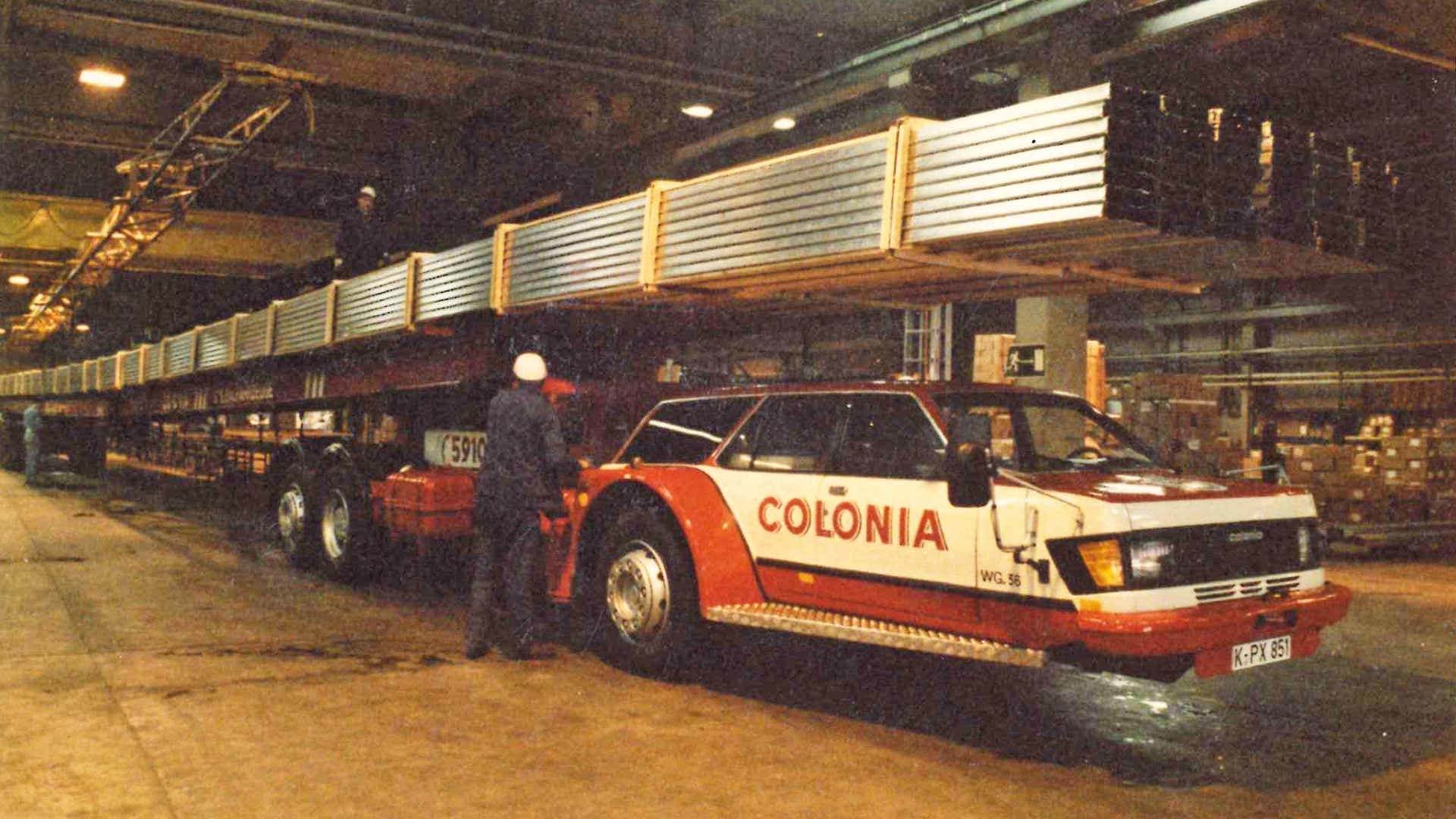
Historischer Kraftverkehr notes that the wagon cab was extremely bizarre, too. Apparently, the truck’s poor driver had a hard time getting sleep in it because curious people loved to climb all over the rig. Then, when the driver was commanding the truck, it wasn’t even that great a drive. Since the driver’s seat was more or less several feet in front of the front axle, the pivot point for the suspension was far enough back that the truck raised and lowered on bumps like a boat in rough seas. This means that, hilariously, the driver managed to get seasick while on the road. It was also found that the wagon’s seats were only marginally comfortable in their new role in a heavy truck.
The Schnibbel-Mobil probably also suffered from the same downsides as other “cab-under” trucks, like poor upward visibility and the driver being blinded by the headlights of other vehicles.
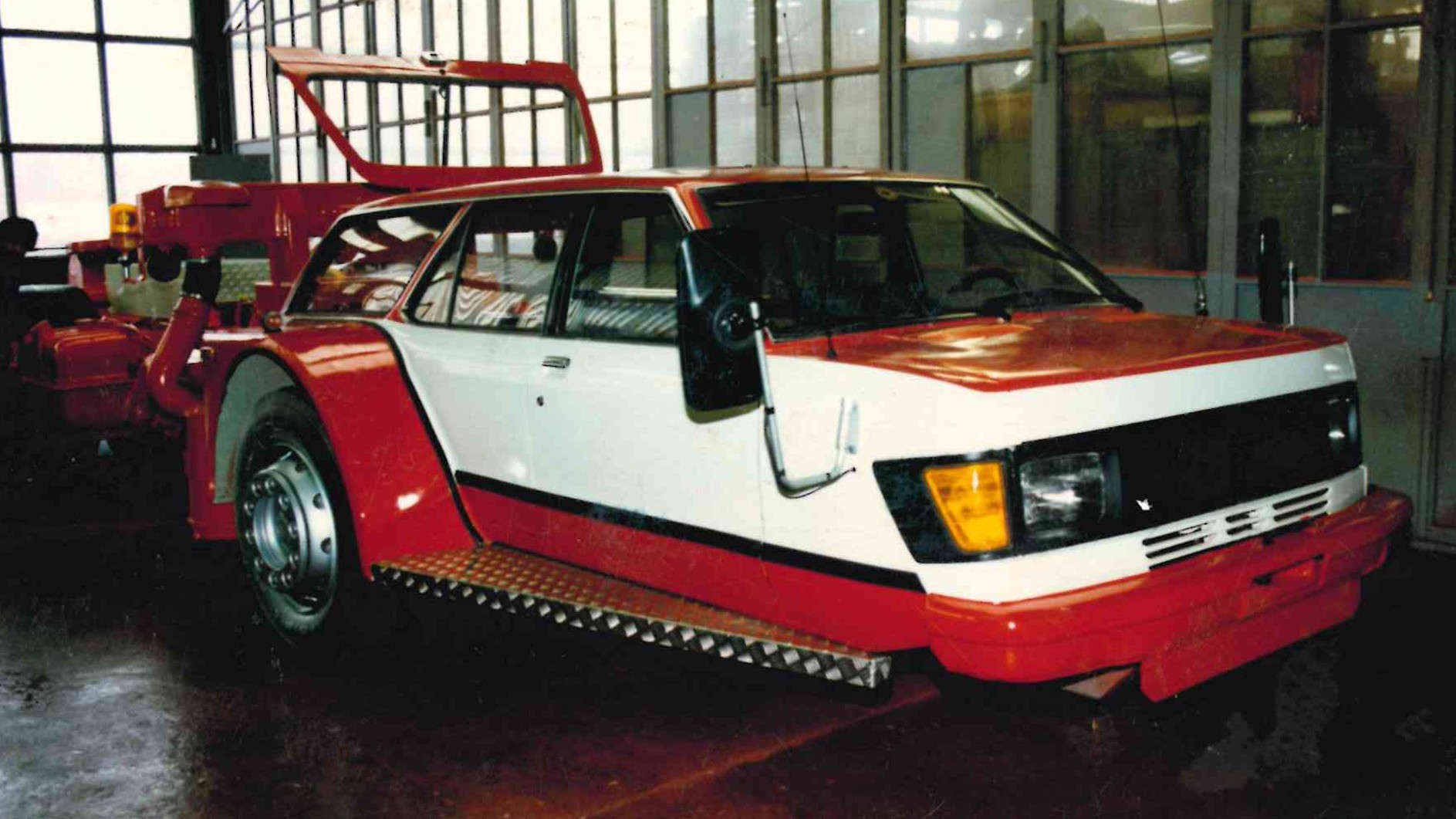
By the late 1990s, Colonia succeeded the Schnibbel-Mobil with an even longer truck and took the Schnibbel-Mobil back into its possession. The truck has been in the company’s historic fleet ever since. While the truck is no longer on the road, a model of it can be found in Colonia’s headquarters. Enthusiasts have also gotten their own scale models.
As I said before, the Schnibbel-Mobil was not even close to being the only truck of its kind.
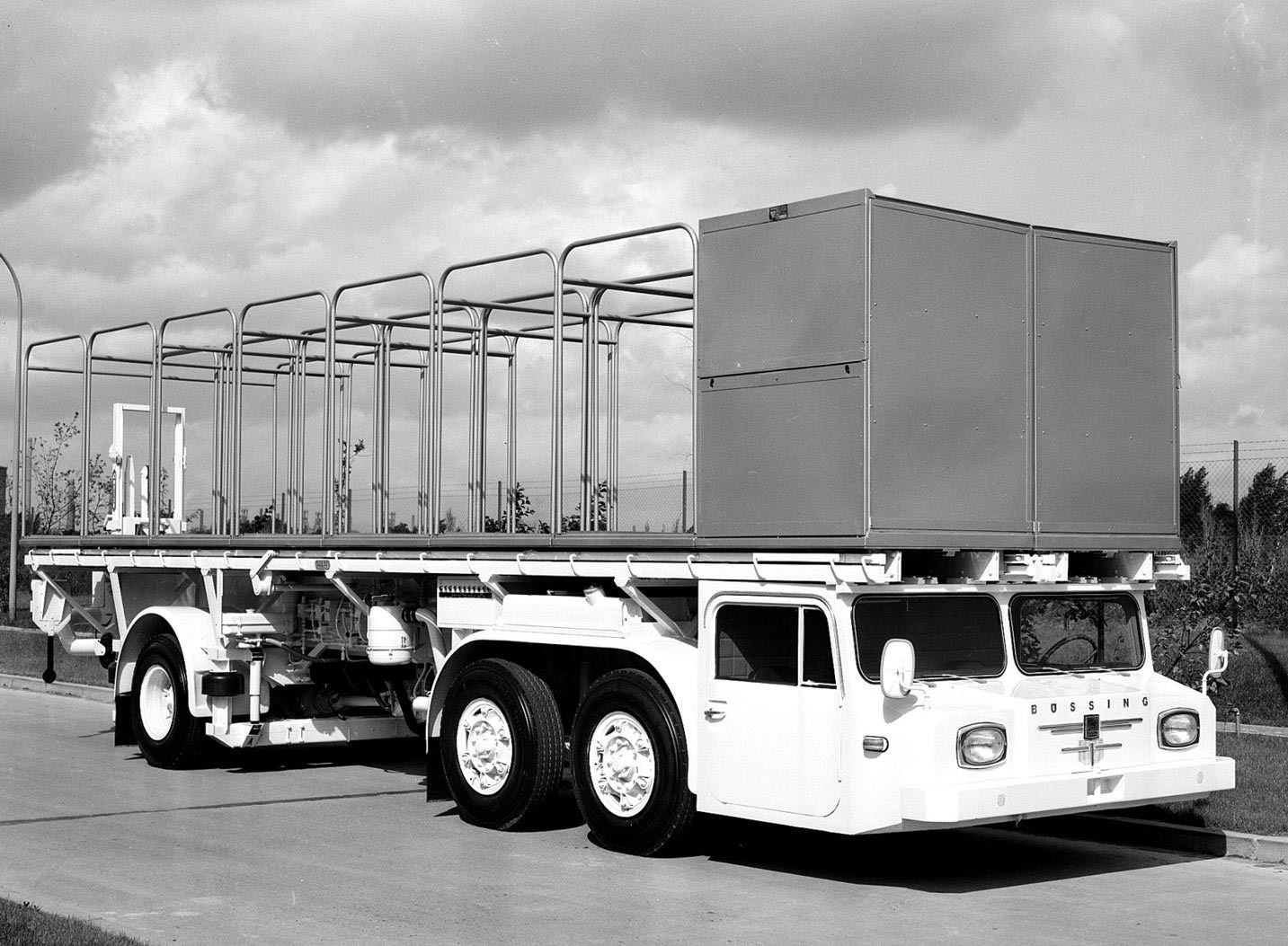
It wasn’t even the only German truck of its kind. Büssing had a cab-under truck (above), as did the aforementioned Steinwinter. The DAF LKW-Transporter was a cab-under car hauler truck. This wasn’t even the only cab-under truck to have car parts. NBC’s The Highwayman featured custom trucks, and one of them was a weird custom Peterbilt cab-under that sported the doors and the overall shape of a Chevy S-10 cab.

But all of them, I think, the Schnibbel-Mobil was perhaps the craziest. Colonia took a different approach to pretty much every other manufacturer. Instead of building a cutting-edge truck with custom everything, the company took an existing truck, dropped a wrecked Ford wagon on top of it, and then sent it out the door. I love that.
Of course, even taking a refreshingly easy route couldn’t solve the problems with the cab-under concept. It seems like while these trucks might have been brilliant solutions to carrying massive loads with singular trucks, they always have pesky downsides that keep the cab-under as a sort of niche or novelty. Still, I can’t help but be amazed that such a truck as this ever existed in the first place.
If you know any more information about the Schnibbel-Mobil, drop me a line at mercedes@theautopian.com. I’d love to learn more!
(Update: Corrected spelling errors due to poor translations. We regret the error.)









My take is that a European Granada wagon is fine looking car. All those headlights! We never get cool stuff like that in the US.
Putting a Ford on top of an MAN is acceptable, but then grafting a Mercedes-Benz front end to this concoction is simply rude. Love it.
The “before” picture of the truck looks B&W, took me a double take to realize it was in fact full cour, just happened to be a grey truck on greyer background 🙂
That Granada was a fine looking wagon. Reminds me a little bit of a Peugeot 505 with a dash of W123 thrown in for good measure. Too bad we never got the good stuff here in the States.
Seeing these cab under vehicles makes me want to stance natun them hard, slam on the ground, remove the stuff up top, go all bosozoku style. No rational reason whatsoever… Weirder the better…
For some reason, there is surprising amount of variety in the national truck rules in EU. Could be that the national exceptions must stay within their home countries, so nobody cares. 34,5 m max length in Finland, but there is more space and way less people than in Netherlands or Germany. Overtaking? Patient one must be.
Also, sometimes, these varieties were there to protect local industries. France, for instance, had their own weight thresholds and minimum power requirements, which helped protect Berliet and Saviem and everyone, but also made their products largely impossible to export.
Switzerland had a long-standing maximum width rule of 2.3 m (90.5″) for trucks used in local traffic (skinny mountain roads), which led to some interesting specials being made, like the Volvo CH230.
That Granada wagon looks like a bizarro-world Mercedes W123 wagon. I bet that Granada would have sold better than the ridiculous thing we ended up with.
The non estate version was quite popular here in the UK, It was a good car.
Hi Mercedes. FYI: the truck in the river in the B&W photo in the ‘Built For One Job’ section is actually a Diamond T; that’s the full name of the company, named after himself by founder Charles Tilt (of Chicago, dontchaknow).
So presumably the source of the quote believed that the truck is a T (model) by Diamond (make) and just omitted what they believed was the model, like referring to a “Ford Escort” as a “Ford.” Instead, it came out more like calling a Kenworth “Ken.”
Thanks for the additional info! Colonia has a history of building on existing trucks. So that makes sense that the first truck it modified was a Diamond T.
“Ford Granada Tumier”.
TuRNier, not TuMier. Turnier is German word for station wagon (archaic, we use Kombi or Kombiwagen nowadays) and tournament.
Arnold Schwarzenegger voice: “it’s naht a Tumier!”
“Turnier” just means “tournament” in standard German. Ford appropriated it as a name for their Wagons, same as Audi calling theirs “Avant”.
Dang it! I had it fixed. I roughly translated that magazine’s article and did a quick search to check spelling. Looks like enough Americans have made the same mistake that it confirmed my own spelling error.
No worries!
That reminds me I have an unbuilt Kibri HO scale model kit od a Mercedes heavy haul tractor with Colonia decals. I think I will revisit them this winter, along with my existing Titan tractor and fire engines
Share pics at mo87.de
The name of the German publication is Historischer Kraftverkehr.
That looks both bonkers and absolutely awesome. I cannot help but wonder though, what would it would look like after a 30mph head-on impact.
Have you written about the Mack U series of trucks yet? Watched the Cruel Summer music video recently and my big takeaway was what the hell was that cool Mack truck.
Beautiful!
This is exactly what I come to the Autopian for!
I can only imagine how bad the up and down was for the driver – I used to get a little motion sick driving coaches on bad roads. And there would be no headroom in this thing for a proper air-ride seat (and I doubt it had air suspension either), so I bet it was a plenty rough ride too. Shaken AND stirred!
Hot Wheels needs to make a die-cast collectible of this.
This is like a Mansory Granada.
And, yet, it still rides quite a bit higher than every other car on the road – a complaint raised without even having to deal with jacked-up Ram2500s in the EU.
Besides, the IIHS says this.isn’t a problem. Nothing to see here!
Agreed – I’m a little confused by the comment about headlight glare being a problem in this cabunder. This looks about is high as a tallish but not very tall modern SUV. If glare was a problem with this, then it was more of a problem was the vast majority of vehicles on the road at the time, which rode lower than this. No?
I guess it is still lower than conventional semi trucks. So they get to see a little of what we car drivers deal with.
Pickup/SUV headlights being so high really gets on my nerves. Even if the hood of the vehicle needs to be 6′ tall (it doesn’t), the headlights don’t need to be up there as well. The headlights need to be down near the bumper, like most semi trucks.
There is a minimum height requirement for headlights, which is why pop-ups exist. It’s surprising that there is not a maximum height. Or if there is, why it’s not enforced.
Most regulations are not enforced and only exist so that the police have justification to pull people over when citizen complaints for a specific issue grow too numerous. The IIHS is of no value so perhaps we need to complain to our local police chief.
Maximum headlight hight is 54″. Definitely unenforced
Yes, I wish it was.
This looks like some kind of ultimate drift king car, although I don’t know that the physics actually back that up.
Imagine having to worry about being rear-ended by a semi every time you drive, and it’s your own vehicle.
It’s a good thing this came with an 8 speed manual, otherwise it would be have to be named the COLONIC.
The cabover version would be the High Colonic.